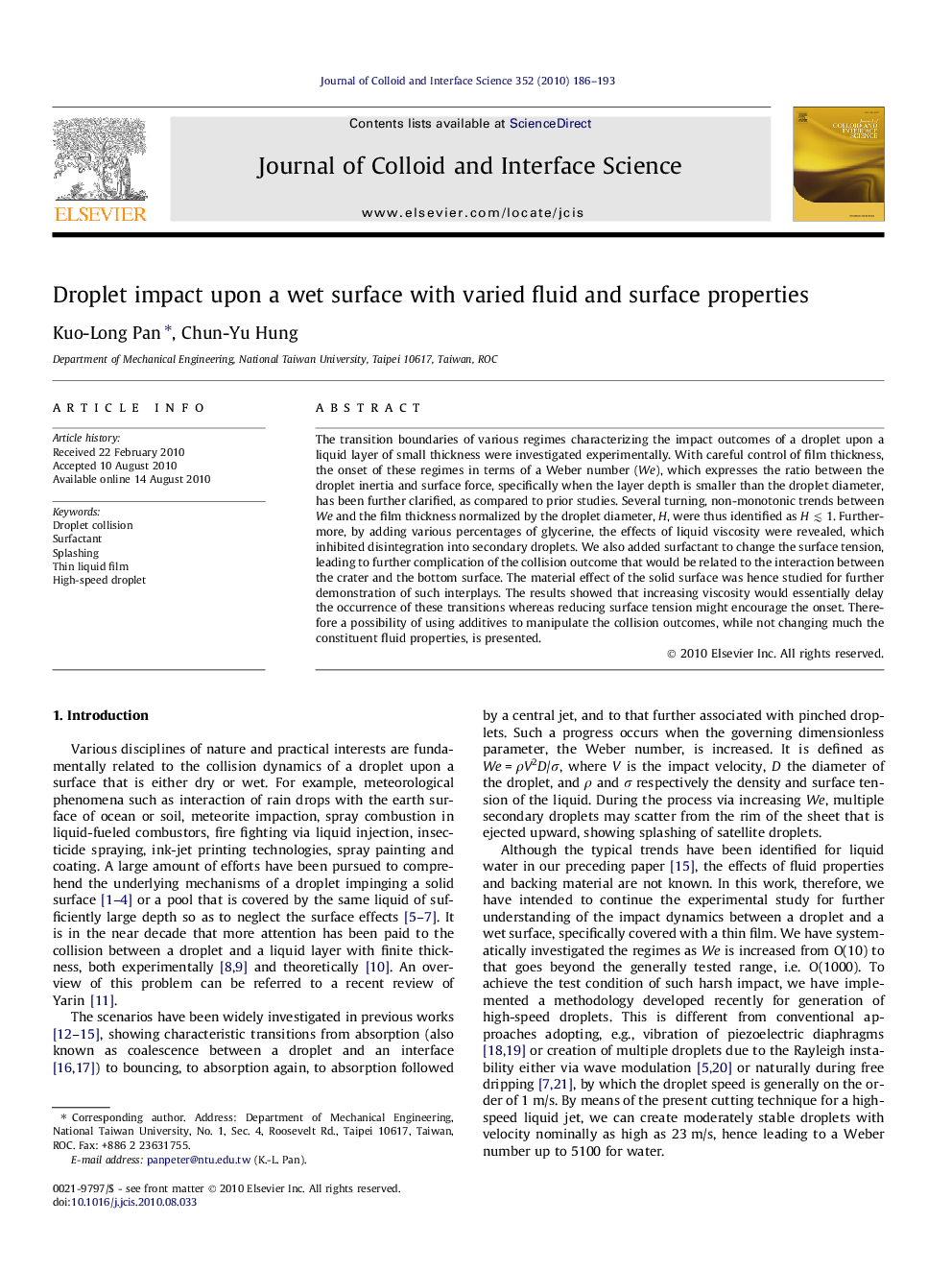| Article ID | Journal | Published Year | Pages | File Type |
|---|---|---|---|---|
| 609281 | Journal of Colloid and Interface Science | 2010 | 8 Pages |
The transition boundaries of various regimes characterizing the impact outcomes of a droplet upon a liquid layer of small thickness were investigated experimentally. With careful control of film thickness, the onset of these regimes in terms of a Weber number (We), which expresses the ratio between the droplet inertia and surface force, specifically when the layer depth is smaller than the droplet diameter, has been further clarified, as compared to prior studies. Several turning, non-monotonic trends between We and the film thickness normalized by the droplet diameter, H, were thus identified as H ≲ 1. Furthermore, by adding various percentages of glycerine, the effects of liquid viscosity were revealed, which inhibited disintegration into secondary droplets. We also added surfactant to change the surface tension, leading to further complication of the collision outcome that would be related to the interaction between the crater and the bottom surface. The material effect of the solid surface was hence studied for further demonstration of such interplays. The results showed that increasing viscosity would essentially delay the occurrence of these transitions whereas reducing surface tension might encourage the onset. Therefore a possibility of using additives to manipulate the collision outcomes, while not changing much the constituent fluid properties, is presented.
Graphical abstractThe characteristic outcome of a droplet impacting a wet surface, with addition of glycerol or surfactant in water, showing various breakup patterns.Figure optionsDownload full-size imageDownload high-quality image (50 K)Download as PowerPoint slideResearch highlights► Addition of surfactant/glycerol enriched the outcome of a droplet impacting a thin liquid film. ► The regime diagrams were further clarified, demonstrating some turning, non-monotonic trends and various breakup patterns. ► Increasing viscosity would essentially delay the occurrence of these transitions whereas reducing surface tension might encourage the onset. ► The interaction of the resulted liquid crater and the bottom solid plate was identified, revealing the significance of the backing surface.
